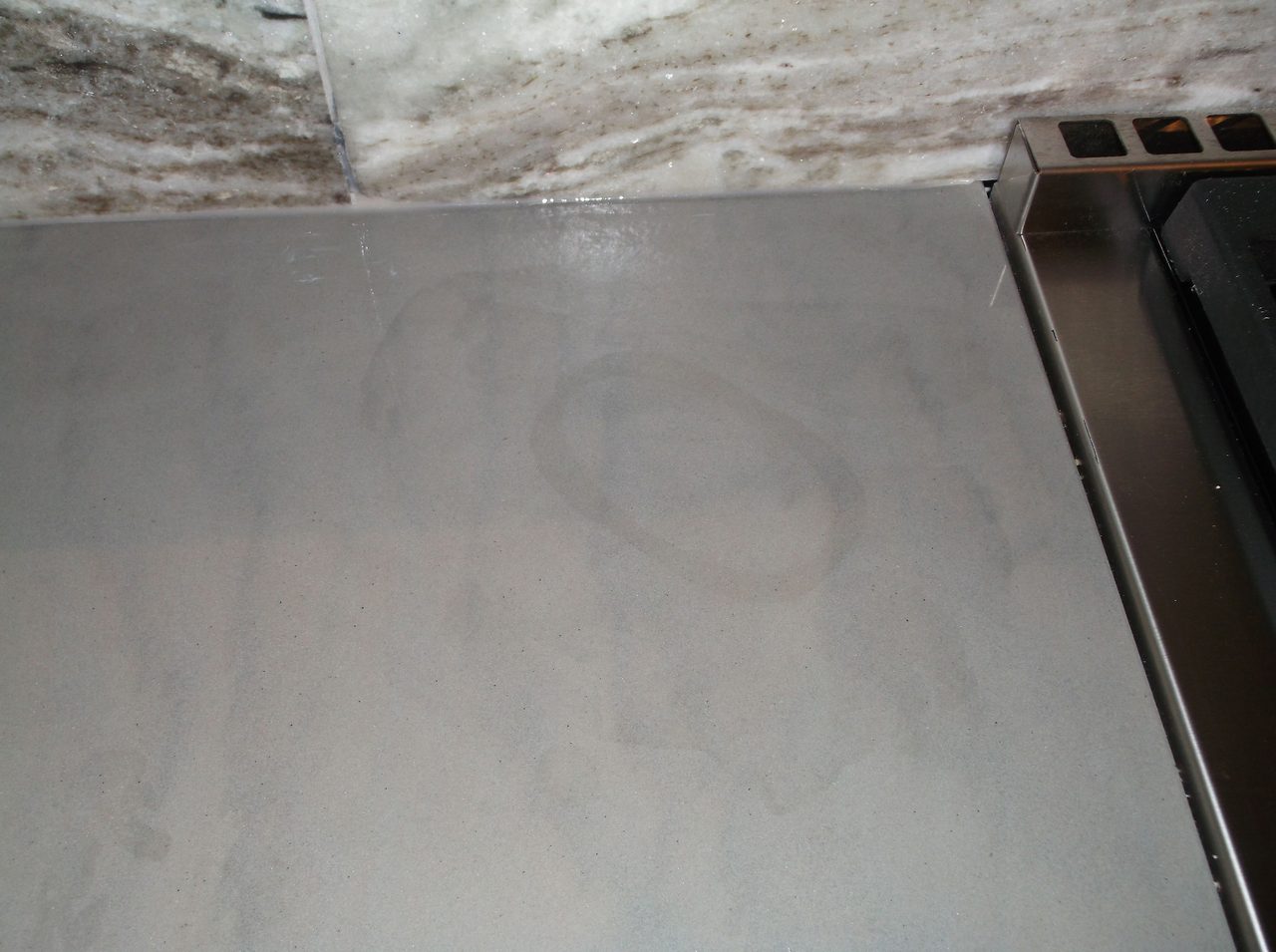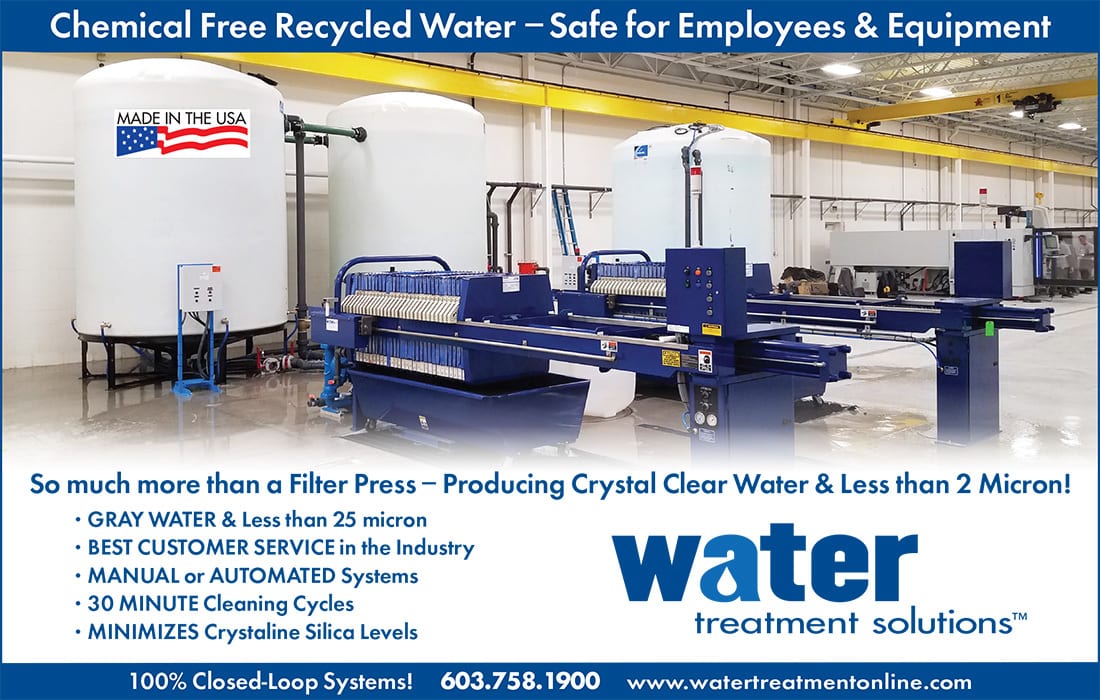To Stain or not to Stain?
A few helpful tips to know about stains and porous surfaces.
by Scott Higginbotham, Dry-Treat, Stone & Masonry

Image courtesy of Scott Higginbotham of Dry-Treat, Stone & Masonry
When a surface is stained, the discoloration is likely due to liquids carrying impurities into the capillaries of the natural stone or other manmade surface such as concrete, grout, brick or other surfaces. The liquid then evaporates or dries and leaves the “stain” under the surface. Cleaning the surface with a cleaning product is the first thing most people try to remove the discoloration. The second, if that does not work, is a poultice.
Poultices
A poultice is a cleaning method used to help remove spot stains, which are too deep, too old or too tough for normal cleaning with a heavy-duty cleaner. A poultice is usually effective for stains from fat, oil, coffee, tea, cola or organically based dyes. For the poultice to work correctly, it must be left on the surface for at least 24 hours, as the cleaning agent needs this time to break down and draw out the stain. Poultices are generally used for small stained areas -- up to approximately 8 inches in diameter. Larger areas require a different method. In many cases, more than one poultice application must be done, depending on how old the stain has been on the surface or the makeup of the stain. In other cases, the surface can be cleaned and re-surfaced to remove the stain through honing a natural stone or concrete, in other surfaces this cannot be done without damaging the surface. Not ALL stains can be removed with all these techniques, and are in the surface and must be replaced or remain with a discoloration.
Impregnating Sealers
Applying a good impregnating sealer is helpful and can help protect your surface, but you can still get stains with sealed surfaces, and they are easier in general than unsealed surfaces to remove the stain. The deeper your sealer goes into the surface, the more it will protect it. The higher up the sealer sits on the surface will allow it to deteriorate faster, and you may have to re-seal without even knowing it is gone until a misfortune of leaving a spill and getting an unsightly stain. The absorption percentage is what our industry uses to determine how a surface or substrate will absorb liquid -- ASTM C97 for natural stone. As design trends change, stone quarries around the world -- along with manmade surface manufacturers -- are constantly introducing new surfaces into the market only to find out later about cost and frequency of maintenance of these porous products.
Alternative Stone Surfaces
Even manmade surfaces do not test as an absorption of 0%, so they will absorb some liquids. With manmade “nonporous” marketed “no need to seal” surfaces, such as quartz and other manmade countertops, it is difficult to give an unbiased opinion on this. Engineered stone is crushed stone mixed in epoxy resin. Like most fashion fads, at the start it looks great, but it is certainly not maintenance free. Over time, engineered stone will discolor and require a sanding and repolish to bring it back to life. Many quartz and porcelain manufacturers have marketing campaigns that are selling customers on a surface that requires no maintenance or upkeep. This is just not the facts. Everything must be cleaned and maintained. In our opinion, nothing beats the timeless good looks of natural stone. It is millions of years old before it gets to the home or building, and will be around long after ours. Sealed natural stone provides an excellent natural and durable worktop that can take hot pans, sunlight and anything else life throws at it.
Prevention
Prevention is the best measure, and like other surfaces that can stain, a good plan and timely action can be the best advice. Knowing the different types of stains -- organic, inorganic or solvent-based -- is the first step. These are the three main types with several subcategories in each group. Each of these require different bases to remove the discoloration on the surface. Certain cleaning agents or chemicals can set or decrease the chances of 100% removing the stain, so a little knowledge or calling a surface restoration specialist is advised. Getting the stain out quickly is also advised, as the longer it sits in the surface, it can move deeper into the substrate.
